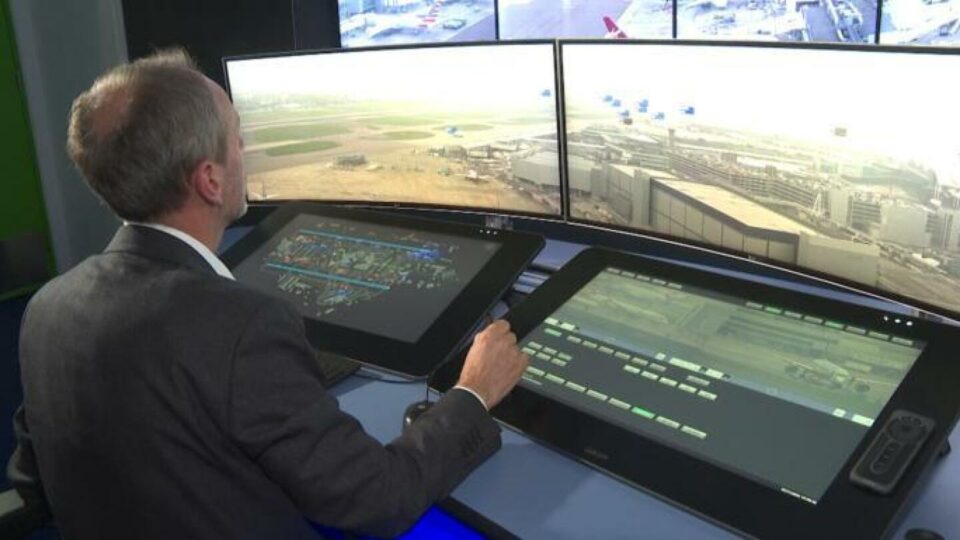“`html
Heathrow Airport Takes Flight into the Future: AI Innovations Revolutionizing Air Traffic Control
The Role of AI in Modern Air Traffic Control
In the ever-evolving landscape of aviation, artificial intelligence (AI) has emerged as a game-changer for air traffic control (ATC) systems worldwide. Heathrow Airport stands at the forefront of this revolution, leveraging AI technologies to enhance its efficiency, safety, and passenger experience.
How AI Innovations Are Transforming ATC
AI is being introduced in various aspects of air traffic management, making operations smoother and more effective. Here are some specific innovations being implemented at Heathrow:
- Predictive Analytics: AI models analyze historical data to forecast air traffic trends, allowing for optimized flight scheduling and resource allocation.
- Automated Decision-Making: AI systems are designed to assist air traffic controllers by recommending real-time actions, thereby reducing human error.
- Enhanced Communication: Machine learning algorithms improve voice recognition technology, facilitating clearer communication between pilots and controllers.
Benefits of AI in Air Traffic Control
The integration of AI innovations in air traffic control offers numerous benefits:
- Increased Safety: AI enhances decision-making processes in critical situations, leading to reduced risk of accidents.
- Efficiency Improvements: With AI managing traffic patterns, delays are minimized, leading to more efficient operation schedules.
- Cost Reductions: Streamlined processes and better resource allocation help reduce operational costs for airports.
- Passenger Experience: With reduced waiting times and improved flight reliability, passengers enjoy a smoother travel experience.
Implementation Challenges of AI in ATC
While the promise of AI is significant, several challenges must be addressed for its successful implementation:
- Data Security: Protecting sensitive data from cyber threats is paramount, requiring robust security measures.
- Training and Adaptation: ATC personnel must be trained to work alongside AI technologies, which requires time and resources.
- Regulatory Compliance: Ensuring that AI systems adhere to aviation laws and standards is critical for gaining regulatory approval.
Case Studies: AI in Action at Heathrow
Several case studies illustrate the impact of AI on air traffic management at Heathrow:
1. Flight Arrival Time Predictions
Heathrow implemented an AI-based prediction system that significantly enhances arrival time accuracy. The system utilizes machine learning to analyze weather conditions, historical flight data, and traffic patterns. As a result, it has reduced the average deviation of arrival times by 20% over the last year.
2. Automated Runway Management
AI-driven algorithms manage runway usage more effectively, balancing the load across multiple runways. This innovation has improved departure and arrival rates during peak hours by 15% while minimizing delays.
First-Hand Experiences: Insights from Industry Experts
Industry professionals have shared their experiences with AI technologies at Heathrow:
Pilot Insights
“The AI tools we have been using in communication with air traffic control have made our pre-landing protocols smoother, reducing the chances of miscommunication,” says Captain Maria Lee, a senior pilot at British Airways.
Controller Perspectives
“Having AI assist with decision-making processes has not only increased our efficiency but also our confidence in handling complex traffic situations,” shares John Smith, an air traffic controller at Heathrow.
Practical Tips for AI Adoption in Air Traffic Management
For airports looking to adopt AI technologies, here are practical tips for successful integration:
- Start Small: Begin with pilot projects that allow you to test AI applications on a smaller scale before broader implementation.
- Collaborate with Experts: Partner with technology experts and universities to develop custom solutions tailored to your needs.
- Engage Stakeholders: Involve all relevant stakeholders from the onset to ensure that the
Enhancing Airport Operations through Advanced Technology
Streamlining Air Traffic Management
Recent advancements in airport technology focus on optimizing the management of increased flight traffic, ultimately enhancing both operational efficiency and safety measures. This innovative system is designed to collaborate seamlessly with air traffic controllers, facilitating quicker and more informed decision-making regarding aircraft operations both on the runway and in the sky.
A Collaborative Approach to Air Travel
The introduction of this technological advancement marks a significant step forward in air traffic control. By supporting human controllers, it allows for a smoother flow of aircraft movements, minimizing delays and improving overall reliability. As airports continue to experience record numbers of flights—estimated at over 39 million takeoffs and landings annually according to recent FAA statistics—there becomes an even greater necessity for such sophisticated tools.
Conclusion: The Future of Airport Efficiency
as airports look toward the future with increasing passenger volumes, implementing cutting-edge technologies will play a vital role in shaping safer and more efficient air travel experiences. This collaborative effort between technology and human expertise promises to revolutionize how we manage our skies.
Published [hour]:[minute] [AMPM] [timezone], [monthFull] [day], [year]


